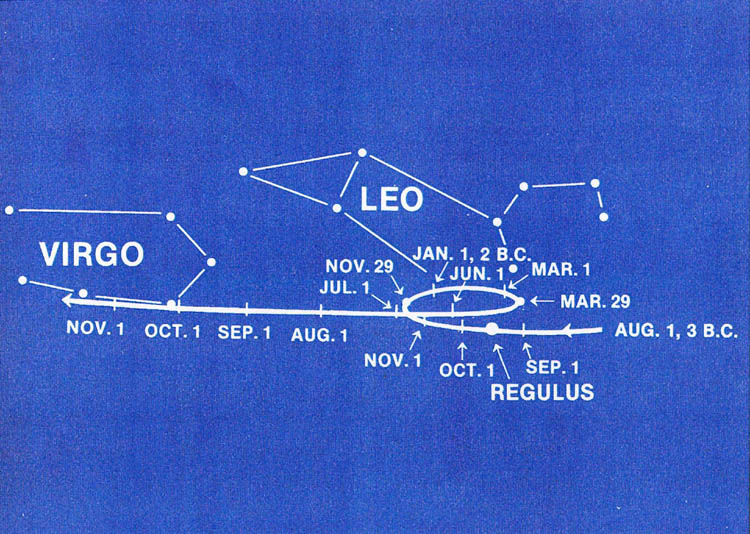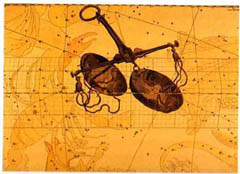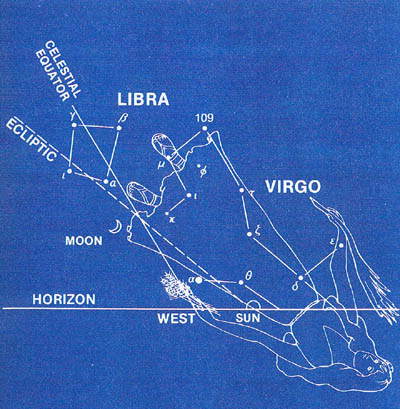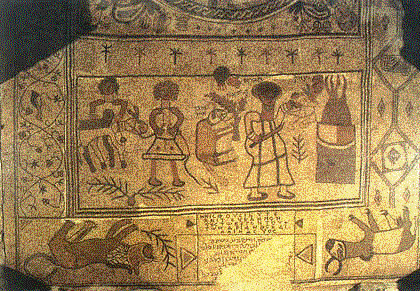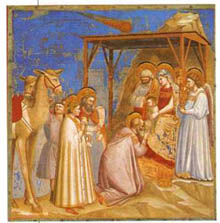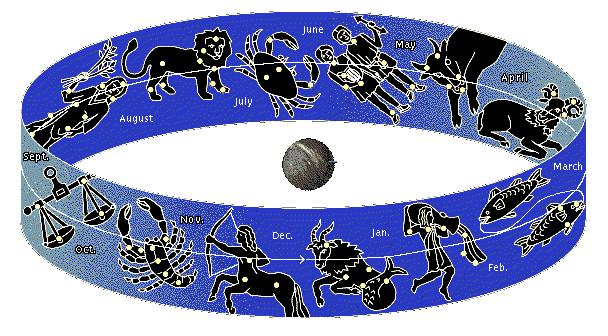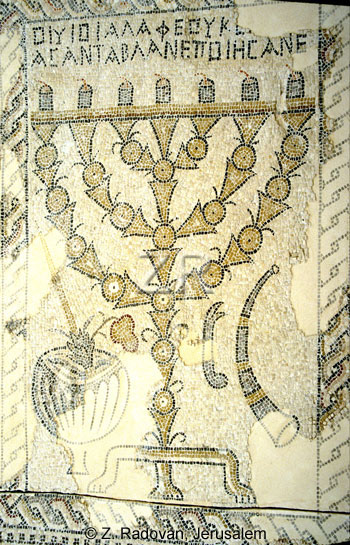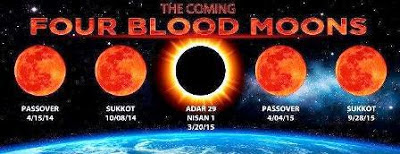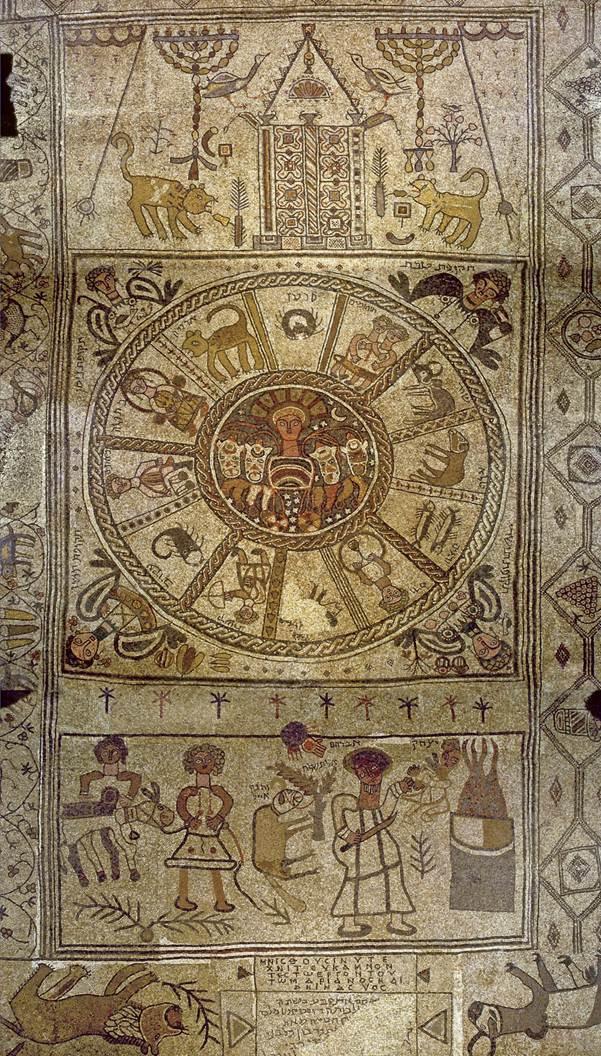
Eastern Light Through the Hebrew Tabernacle [Part I.]
The Victorious Return of the Lord Jesus Christ will shine upon humanity like no other light before. This has been prophesied not only in Scripture, but also in the celestial epistles. A third package of divine revelation includes the sacred blueprints of the Hebrew Tabernacle and the Jerusalem Temples beginning with King Solomon’s. A basic pattern emerges involving these plans for Israel’s Temple and Tabernacle as divine architectural expressions of the gospel of the Coming Redeemer-Jesus Christ, serving as a sacred architectural fulcrum between the witness of the stars and God’s written Scriptures. This is the subject of our current study in Biblical Astronomy as it relates to the glorious second coming of the Lord Jesus Christ. In our previous Blog post [read more] we focused on the Venus-Mars planetary conjunctions of 2015, and how they frame the crescendo of the Blood Moon Tetrad of 2014-2015. We drew some comparisons to the heavenly signs surrounding the Birth of Christ in 3-2 BC, which we will pick-up again in this post. We find an important passage of Scripture to get us started in Matthew 24.
Matthew 24:27-36
27 For as the lightning cometh out of the east, and shineth even unto the west; so shall also the coming of the Son of man be.
28 For wheresoever the carcase is, there will the eagles be gathered together. 29 Immediately after the tribulation of those days shall the sun be darkened, and the moon shall not give her light, and the stars shall fall from heaven, and the powers of the heavens will be shaken: 30 And then shall appear the sign of the Son of man in heaven: and then shall all the tribes of the earth mourn, and they shall see the Son of man coming in the clouds of heaven with power and great glory. 31 And he shall send his angels with a great sound of a trumpet, and they shall gather together his elect from the four winds, from one end of heaven to the other.
32 Now learn a parable of the fig tree; When his branch is yet tender, and putteth forth leaves, ye know that summer is nigh: 33 So likewise ye, when ye shall see all these things, know that it is near, even at the doors. 34 Verily I say unto you, This generation shall not pass, till all these things be fulfilled. 35 Heaven and earth shall pass away, but my words shall not pass away. 36 But of that day and hour knoweth no man, no, not the angels of heaven, but my Father only.
As Matthew tells us in verse 27, the light of the Lord’s Second Coming will shine from the east to the west. It is known that the Temple was also constructed on this East-West axis, and that the light of sunrise would shine into the Temple’s doors between the great brass pillars at the Temple’s entrance, known as Jachin and Boaz. When we take into account the Solar Eclipse taking place on the Hebrew Feast and holy day-Nisan 1, the opening of the Ecclesiastical Year on the Spring Equinox, March 20th, 2015 along with a Solar eclipse on the Feast of Trumpets, Sept. 13th, 2015 opening the civil year within a week of the Fall Equinox, dividing the year according to these sacred days of the Hebrew Calendar, we can see the Almighty marking this east-west axis, as the Light of the Sun is eclipsed by the Moon on both key days. The truth that these heavenly signs occur during a Hebrew Jubilee Year, also opening on Nisan 1 makes it even more compelling, combined with Blood Moons on both Passover and the feast of Tabernacles, capping off the Blood Moon Tetrad in 2015. These Blood Moons of 2015 are the last ones to occur on Hebrew feast and holy days over the next 500 years. The temporal pattern of the Blood Moon Tetrads during the last 200 centuries of the Age of Grace have exhibited a septenary pattern of the Hebrew Feast and holy days seen in the Hebrew Calendar, reflected also in the Hebrew Menorah; [read more]. We can also see this pattern in other architectural elements of the Hebrew Tabernacle and Temple. The Jerusalem Temple Doors were framed by two huge brass pillars, called Jachin and Boaz, that are described in I Kings 7. We should notice the Biblical figure of speech pertaining to “many ands,” emphasizing each element found between the connective “and,” starting in verse 13;
1 Ki 7:13 And king Solomon sent and fetched Hiram out of Tyre.[14] He was a widow’s son of the tribe of Naphtali, and his father was a man of Tyre, a worker in brass: and he was filled with wisdom, and understanding, and cunning to work all works in brass. And he came to king Solomon, and wrought all his work. [15] For he cast two pillars of brass, of eighteen cubits high apiece: and a line of twelve cubits did compass either of them about.
For greater details on the celestial and mathematical implications of the measurements of these two pillars please see our study on “Pi in the Sky” @try-god.com. [read more]
I Kings 7:16 And he made two chapiters of molten brass, to set upon the tops of the pillars: the height of the one chapiter was five cubits, and the height of the other chapiter was five cubits: 17 And nets of checker work, and wreaths of chain work, for the chapiters which were upon the top of the pillars; seven for the one chapiter, and seven for the other chapiter.
“checker”- *H7639 [sebakah]– This shows a lattice work around the capitals of these pillars. The etymology of the word Balustrade [set of small pillars supporting a handrail] is from the Italian “balaustro;” a wild pomegranate flower,1 notable for its seven petals, as in the next verse. With each capital bearing seven chains of pomegranates totaling fourteen in all, the numerical symbolism of these pillars relates to the septenary blueprint of the Temple itself, comprised of 14 squares of 10 cubits each. We have seen prior evidence of the divine pattern of the number seven, as it highlights the temporal structure of the Creation week and the Feast of Weeks, [7×7 weeks] unto Pentecost in the 50th week. We also see the same pattern in 7×7 years, leading into the 50th year of Jubilee.

- Lilies and Pomegranates in the Hebrew Temple
1 Kings 7:18 And he made the pillars, and two rows round about upon the one network, to cover the chapiters that were upon the top, with pomegranates: and so did he for the other chapiter.
“pomegranates”- Gittith = Winepresses (related to the Autumn Feast of Tabernacles). Bullinger states regarding the biblical symbolism of this word: “There are three Psalms which have this word in their subscription; Pss.7, 80, 83. Gittith is from Gath, (Judg. 6:11, Neh. 13:15, Isa. 63:2, Lam. 1:15) “The word speaks of the fall, just as Shoshannim, [lilies] speaks of the spring. Hence Shoshannim, (flowers) is associated with the spring festival [Passover] just as Gittith (fruit of the vine) is associated with the autumn festival (Tabernacles). The Passover told of Jehovah’s goodness in Divine redemption; the Feast of Tabernacles told of Jehovah’s goodness in Divine keeping.”2 [emphasis mine]
1 Kings 7:19 And the chapiters that were upon the top of the pillars were of lily work in the porch, four cubits.
“Lily”-white flower in color, with a straight tubular trumpet shape, carrying a musical connotation, associated with the joyful praise of the day of trumpets. Shoshannim (Lilies, or the Spring Festival, Passover) This word is found in the subscription of two Psalms 44, 68… “as the spring and autumn were appropriately represented by flowers and fruit respectively, so lilies and winepresses were singled out from each. The Passover and the Feast of Tabernacles divided the year into two fairly equal parts; the former being the spring festival and the latter the fall…. lilies and pomegranates (spring flowers and autumn fruits) were everywhere seen in the Temple (I Kings 7:20-22), and the knops (or knobs) of flowers of Ex.25:31-34 were doubtless the globe-like pomegranates and lilies 3. [emphasis mine]
Even as the Spring and Fall Equinoxes, highlighted on their Feasts and Holy Days in the Hebrew Calendar, mark the East-West Cardinal Directions as seen in the Hebrew Tabernacle and Temple, so we see this emphasized in the heavenly signs surrounding the Biblical Astronomy of the Birth and Second Coming of Jesus Christ. This is detailed in the Jupiter-Venus conjunctions of 3-1 BC, marking the Birth of Jesus Christ. We have seen this with Jesus fulfilling the sufferings of his first appearance on earth in his ministry to Israel, with the heavenly signs of Revelation 12:1-4, marking the birth of the Messianic King. So we will also see these heavenly signs fulfilling the dual significance of Revelation 12:1-4, birthing the Messianic Kingdom in the glorious Second Coming of the Lord Jesus Christ. There is a series of Jupiter-Venus conjunctions that have already begun, which are an important element in the heavenly signs marking the glorious return of Jesus Christ, and they will mark the constellations of the eastern quarter of the Israelite encampment around the ancient Tabernacle of Israel in the wilderness, even as the heavenly signs surrounding the birth of Christ did.
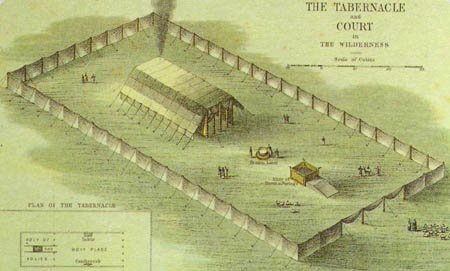
In Exodus 28:33,34 and 39:25,26 we find a description of the robes of the High Priest, one of the threefold offices of Jesus Christ. An interesting feature of his garments was the globe-like pomegranates and lilies, around the hem of the High Priest’s ephod. The ephod was tied to the four-corners of his square breastplate, holding the 12 jewels associated with the twelve zodiacal signs, aligned to the four Cardinal Directions on the horizon. Thus, not only the architecture of the Temple, and Tabernacle contained the hidden zodiacal symbolism of the Hebrew calendar, but also the clothes of the High Priest, every detail of which was fulfilled in the ministry of Jesus Christ. The symbolism of the lilies and pomegranates seen in the temple architecture was also mirrored the two basic portions of the year, according to its civil and ecclesiastical divisions, that we have referenced above. Alfred Edersheim supports this view as follows:
“The division of the year into ecclesiastical, which commenced with the month Nisan (end of March or beginning of April), or about the spring equinox, and civil which commenced with the seventh month, or Tishri, corresponding to the autumn equinox, has by many likewise been supposed to have only originated after the return from Babylon. But the analogy of the twofold arrangement of weights, measures, and money into civil and sacred, and other notices seem against this view, and it is more likely that from the first the Jews distinguished the civil year, which began in Tishri from the ecclesiastical, which commenced in Nisan, from which month, as the first, all others were counted.“4
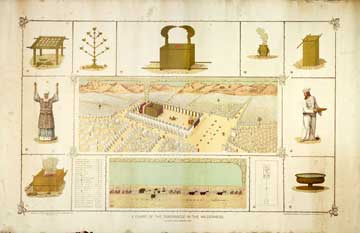
As the context of I Kings 7 continues, we find more details of the geometric structure and mathematical symbolism of the Temple, it’s furniture and services, in agreement with Edershiem’s views above.
God’s people are no longer dependent upon the sacrifices of bulls and goats by a High Priest that could only enter the presence of God in the Tabernacle once a year, but would have continual access to the Heavenly Father through Jesus Christ, the High Priest after the order of Melchisedek. As we have pointed out in other studies on our web-site, [read more] @www.try-god.com the planet Jupiter was known by the Hebrew name Sedeq, showing the relation of the planet Jupiter with the person and everlasting priesthood of Melchisedek. The Jews looked upon him (the Messiah) as the royal offspring of David “the Sedeq Branch” (Jer. 23:5 Jehovah-Tsidkenu). Further, the word Sedeq was associated with “Melek,“- (King), combined into “Melchisedek,” the Righteous King.5
Hebrews 7:11
If therefore perfection were by the Levitical priesthood, (for under it the people received the law,) what further need was there that another priest should rise after the order of Melchisedec, and not be called after the order of Aaron?
Heb 10:19 -20
Having therefore, brethren, boldness to enter into the holiest by the blood of Jesus, By a new and living way, which he hath consecrated for us, through the veil, that is to say, his flesh;
This is consummated in the final Paradise Administration referred to in Revelation 21-22. We find this in the reference to Jesus Christ as the “no more curse” in Rev. 22:3, who healed the curse that was put upon man as a result the fall in Genesis 3:17.
Rev. 22:3 And there shall be no more curse: but the throne of God and of the Lamb shall be in it; and his servants shall serve him:
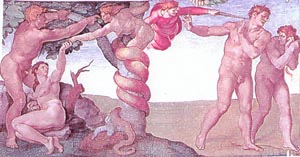
Thus, the birth of the only begotten Son of God signaled the beginning of the end of this curse. In Genesis 3:24, after God rejected Adam and Eve from Paradise, He protected the Way of the Tree of Life on the east side of Eden, with the Cherubim’s fiery sword, until the redeemer could come to reactivate the way of salvation and eternal life with God, for humanity. This door ultimately lead to the altar of the holy of holies, (the Life) in the inner heart of God’s Sanctuary, in the holiest of all in the Hebrew Tabernacle and Temple, containing the Ark of the Covenant.
The truths of Jesus as the Shepherd are vividly seen in three Psalms 22, 23 and 24, showing the sufferings and glory of the Lord. As the Prophet, the Good Shepherd gave his life not only for the sheep, but for the safe-keeping of all people who would come unto him [John 10:11]. As the High Priest and the Great Shepherd, he is the first, last and only door, the alpha and omega, which provides the way of access through his resurrection [Heb. 13:20] unto life, into the true spiritual fellowship with our Heavenly Father. As the King and Chief Shepherd, his victorious Second Coming will exhibit his final glory, coming as the King of Kings and Lord of Lords, [I Pet. 5:4, Rev. 19:16].
Thus, like the eastern shepherd, Jesus Christ embodies Jehovah-Nissi: the redemptive name for Jehovah–God protecting His people, [Ps. 23:1].
The pattern of the east-west axis through the Hebrew Tabernacle and Temple is also found in the order of heavenly signs surrounding the birth of Jesus Christ. We find this in the pattern of three Jupiter-Venus Conjunctions, marking the birth of Christ that occurred from 3 to 1 BC. The first Jupiter-Venus Conjunction was in the final degree of Cancer, near its zero line border with Leo. The second was in fully in Leo, while the third was in Virgo. These three conjunctions in Cancer, Leo and Virgo represent the eastern quarter of the Hebrew zodiac, the heavenly image of the eastern side of the Israelite’s wilderness camp, the entrance or Way to the Door of the holy place (the truth) in the Hebrew Tabernacle. The temporal progression of these planetary conjunctions perfectly matches the divine pattern of Israel’s tribal arrangement on the eastern side of the Hebrew Tabernacle. Judah/Leo was due east of the entrance to the holy of the holies, via the holy place, centrally located between the other two eastern tribes of Issachar/Cancer and Zebulon/Virgo. These planetary unions surrounding the birth of Christ are fully detailed in my book on The Season of the Morning Star. This eastern door to the Hebrew Tabernacle represents the way, the truth, and the life, of John 14:6, which is embodied in Jesus Christ as the risen Son and light of the world, the door of the sheep, the Good Shepherd [Jn.10], the true way which leads unto life.
The Biblical Astronomy of the heavenly signs leading to the Second Coming of the Lord Jesus Christ, not only follow the pattern set by the heavenly signs surrounding the birth of Christ in 3-2 BC, but they also conform to architectural structure of the Tabernacle we have already seen in the Tabernacle of Moses. The first Jupiter-Venus conjunction associated with the Blood Moon Tetrad of 2014-2015 took place in the Beehive cluster in the Sign of Cancer, on August 18th, 2014. There are multiple Jupiter-Venus Conjunctions set to take place in 2015, all in Leo, with additional Jupiter-Venus unions occurring in Virgo in 2016-17. The temporal progression of these planetary conjunctions again perfectly matches the divine pattern of Israel’s tribal arrangement on the eastern side of the Tabernacle, clearly marking the way for the Triumphant Second Coming of the Lord. The brilliant and effulgent light of the Sonrise of the Ages, with the dawning of the Sun of Righteousness, will be the sunburst of the Great Day of the Lord’s Second Coming, when the Daystar arises in our hearts; [II Pet. 1:19].
Footnotes
1. Strong’s Concordance,James Strong [#H7639]
2. Companion Bible, E.W Bullinger App. 65, IV.
3. IBID, XXI.
4. The Temple, Alfred Edersheim, p. 158
5. The Star that Astonished the World, Earnest Martin, p. 58

